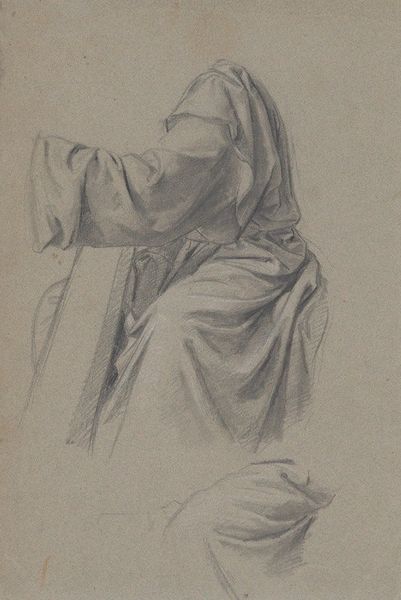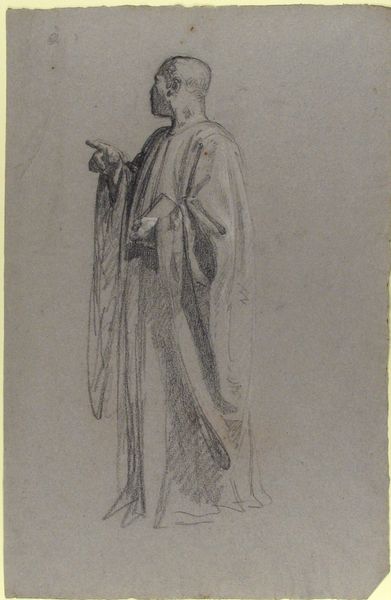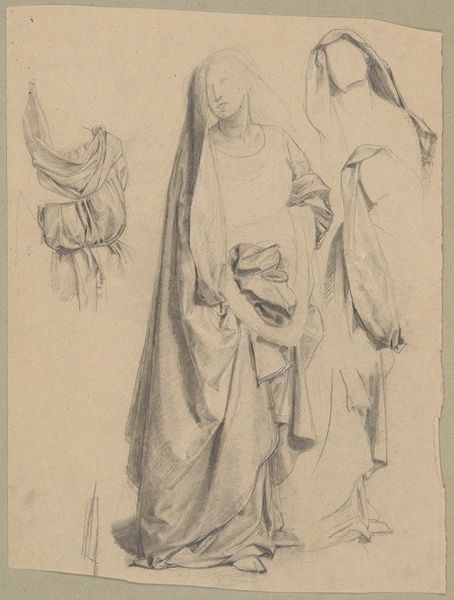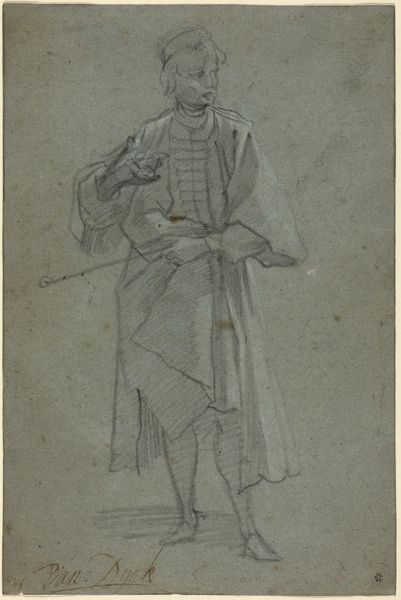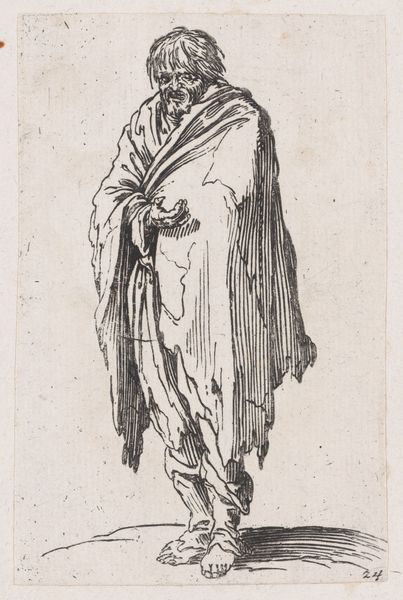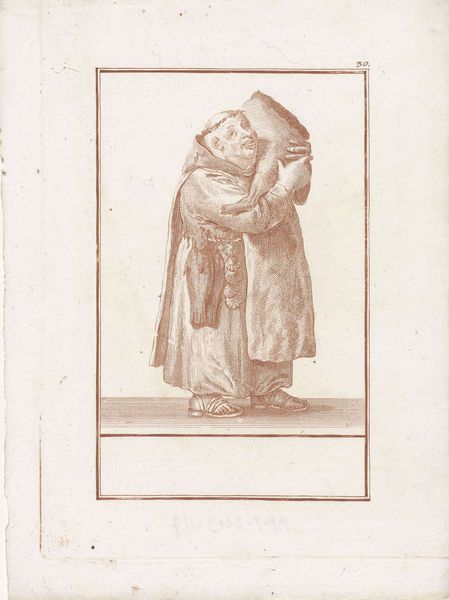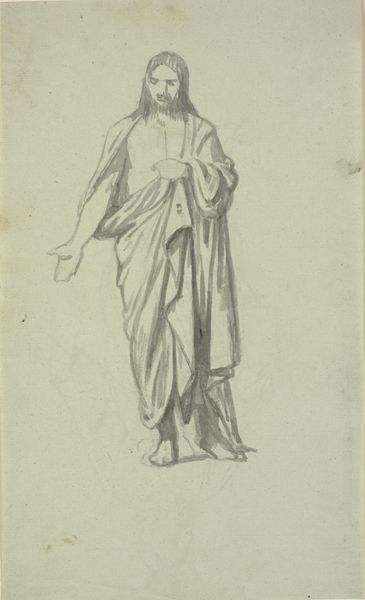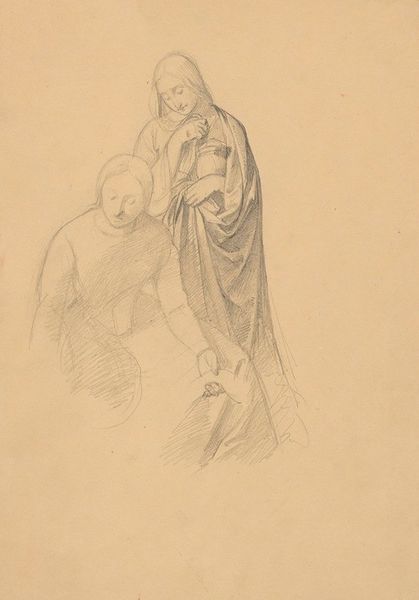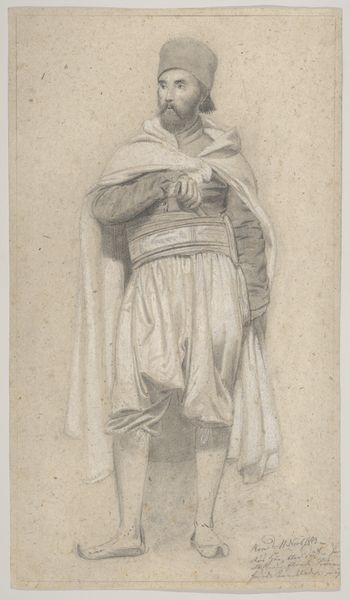
Study of the figure of King Sigismund for the painting ‘The Upbringing of Sigismund Augustus’ 1861
0:00
0:00
drawing, pencil
#
portrait
#
drawing
#
pencil
#
academic-art
Copyright: Public Domain: Artvee
Curator: This is Józef Simmler's 1861 pencil drawing, "Study of the figure of King Sigismund for the painting ‘The Upbringing of Sigismund Augustus.’" Editor: It’s a spectral vision. The lines are so faint, like the king is emerging from a mist. And the color of the paper, a muted green…it’s quite evocative. Curator: Indeed. It provides an interesting glimpse into Simmler’s artistic process. The finished painting was intended to shape a narrative of national identity, showcasing a virtuous upbringing of a future king, but here we see him wrestling with the king’s presence, his form. Editor: I'm struck by the layers of fabrication. First the woven paper, then graphite meticulously applied to mimic textiles and flesh. We see a king represented not by regal pomp, but by the artist’s labor in translating power through material. It reduces royalty to a craft. Curator: I see it as Simmler using historical imagery to construct an idealized vision of Poland’s past, instilling patriotism among a population living under foreign rule. This drawing is not just a material study, but a study of how a ruler’s image can embody national ideals. Editor: But what kind of ‘ideals’ are conveyed through the drape of a robe? Look closely—the rendering is economical, almost mass-produced in its effect, flattening the regal fabric. The very medium—pencil—suggests accessibility and perhaps, a deliberate downplaying of royal extravagance to connect with ordinary viewers. Curator: It's a tension Simmler likely faced: how to depict power in a way that resonates with a society grappling with its own subjugated status. He wants to represent Sigismund with dignity but also approachability. The pencil sketch served a didactic purpose, a vehicle to make history palpable and inspirational for his contemporaries. Editor: Absolutely, and the choice of pencil makes it replicable, able to disseminate this constructed national image through reproductions. Ultimately, this study shows the power of accessible materials in shaping perceptions of power and national identity. Curator: I agree. Looking at the piece again, I am more cognizant of its dual role – the making of a king, and the king’s role in the making of a nation. Editor: A perfect summation. The convergence of labor, material and national consciousness is captivating.
Comments
No comments
Be the first to comment and join the conversation on the ultimate creative platform.
